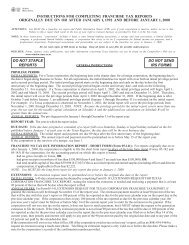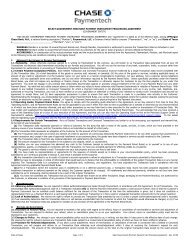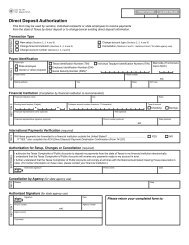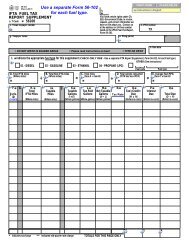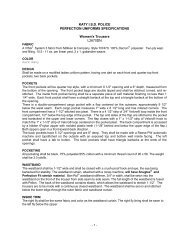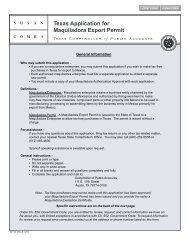Contracts Management Guide - Texas Comptroller of Public Accounts
Contracts Management Guide - Texas Comptroller of Public Accounts
Contracts Management Guide - Texas Comptroller of Public Accounts
You also want an ePaper? Increase the reach of your titles
YUMPU automatically turns print PDFs into web optimized ePapers that Google loves.
Similarly, care should be taken when determining negotiation strategy whether to include, as a part <strong>of</strong> that strategy,<br />
giving the vendors a cost or price that must be met to obtain further consideration. Suggesting a cost or price could<br />
deprive the competitive process from generating the cost or price that is the best value to the state. Also, be mindful<br />
that the above prohibitions still apply, i.e., disclosing competing respondents’ costs or prices is not allowed, even if<br />
done without tying the cost or price to the specific vendor; and respondent cannot be told its price standing relative to<br />
other respondents. Negotiation strategy should be tailored to suit the particular facts and circumstances <strong>of</strong> the specific<br />
competition.<br />
Negotiation Strategies<br />
Negotiation is based on the willingness <strong>of</strong> each party to compromise. In any agreement, there are usually terms or<br />
conditions that each party may be willing to relinquish. Agencies must identify those terms or conditions that are<br />
essential, desirable, subject to negotiation or relinquishment.<br />
Like other parts <strong>of</strong> the contract management process, planning is essential to conducting a successful negotiation.<br />
Planning allows the agency to know which terms and conditions are essential and which are negotiable. The best<br />
practice is to meet with members <strong>of</strong> the contracting team and divide the terms and conditions into groups. Identify<br />
the terms and conditions that are essential to the agreement. These are the terms or conditions upon which the agency<br />
is either unable or unwilling to compromise. Then identify and prioritize the terms and conditions that are desirable,<br />
but not essential to the agreement and which the agency is willing to compromise or relinquish.<br />
Negotiation Techniques<br />
There is not a single approach to negotiation and the following discussion is just one method to facilitate a successful<br />
negotiation effort.<br />
Designate a lead negotiator to establish an organized and controlled negotiating environment that ensures the contract<br />
management team’s effort is efficient, coordinated and unified. The lead negotiator should control the meeting and<br />
ensure everyone is hearing and discussing the same issue. Side discussions are distracting and may inadvertently<br />
provide information to the contractor to the disadvantage <strong>of</strong> the entire contract management team. If available,<br />
provide a private side room for the negotiation team to use for private conversations or to “caucus” during<br />
negotiations.<br />
Do not provide the list <strong>of</strong> essential or other prioritized issues to the contractor because the list will <strong>of</strong>fer a negotiating<br />
advantage to the contractor. On the other hand, before meeting with the contractor, request a list <strong>of</strong> the contractor’s<br />
objections to any contract terms and conditions that explains why the contractor is objecting to each term or<br />
condition.<br />
Be prepared to explain why a particular term or condition is essential or objectionable and place the burden on the<br />
contractor to identify an alternative solution that meets agency needs. Do not feel pressured to agree or disagree to a<br />
single term or condition without considering the impact <strong>of</strong> the entire group <strong>of</strong> negotiated terms and conditions within<br />
the context <strong>of</strong> a final agreement. When the entire group <strong>of</strong> negotiated terms and conditions is completed, consider any<br />
new risks, costs or benefits. Take frequent breaks to discuss suggestions, options or alternatives outside <strong>of</strong> the<br />
presence <strong>of</strong> the contractor. Write down or use a laptop to record the exact language <strong>of</strong> any proposed or alternative<br />
terms and conditions, so that the team evaluates the exact language that will be included in the contract.<br />
Negotiations can reach an impasse over conflicting terms thought to be essential to each party. The three (3) question<br />
approach used to assist an agency in identifying the contracting objectives may be useful to assist the parties in<br />
clarifying and harmonizing potentially divergent objectives and interests. The three (3) questions are:<br />
1. What does your agency want, specifically?<br />
2. What will having what your agency wants, specifically, do for your agency?<br />
3. How will your agency know, specifically, when your agency has received what it wants?<br />
48






